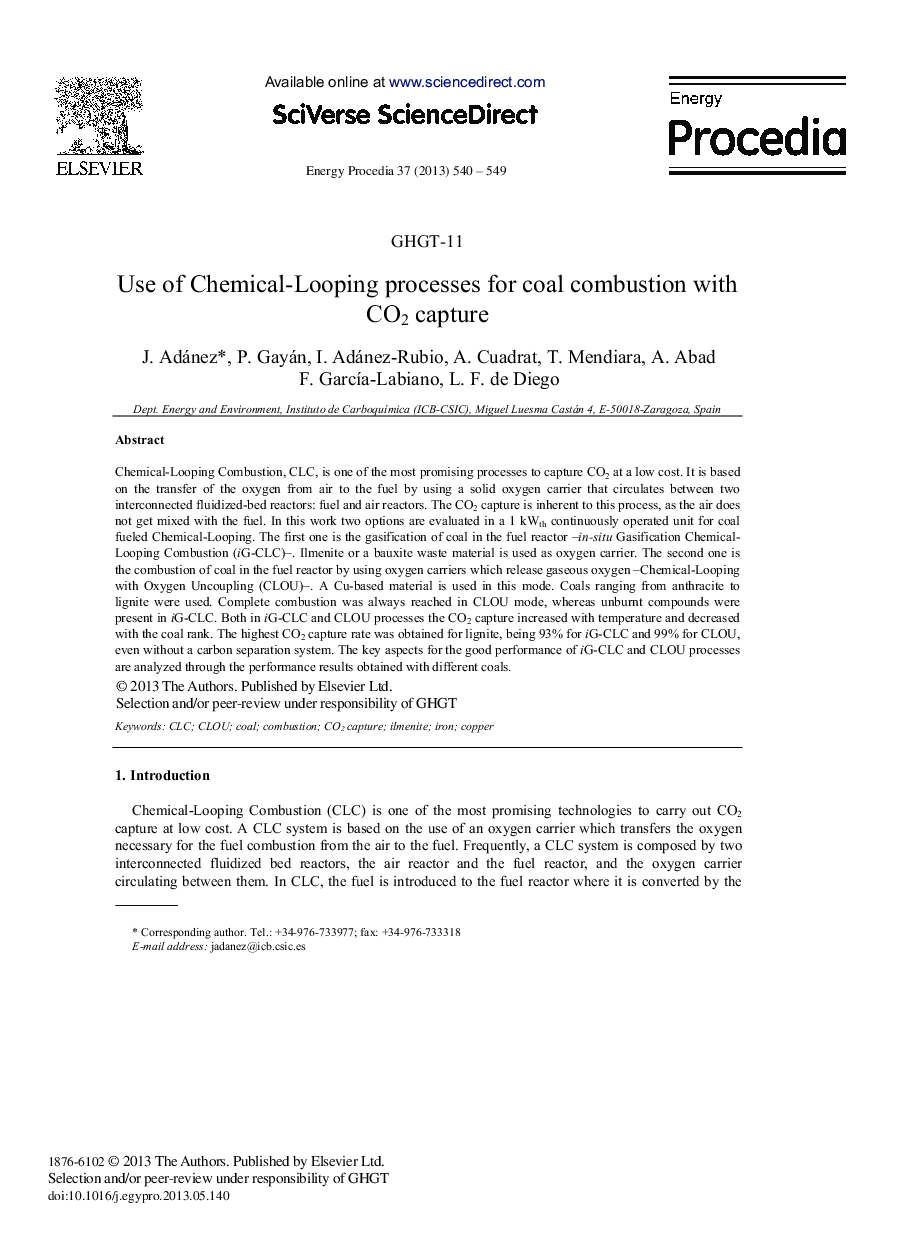| کد مقاله | کد نشریه | سال انتشار | مقاله انگلیسی | نسخه تمام متن |
|---|---|---|---|---|
| 1512853 | 1511198 | 2013 | 10 صفحه PDF | دانلود رایگان |

Chemical-Looping Combustion, CLC, is one of the most promising processes to capture CO2 at a low cost. It is based on the transfer of the oxygen from air to the fuel by using a solid oxygen carrier that circulates between two interconnected fluidized-bed reactors: fuel and air reactors. The CO2 capture is inherent to this process, as the air does not get mixed with the fuel. In this work two options are evaluated in a 1 kWth continuously operated unit for coal fueled Chemical-Looping. The first one is the gasification of coal in the fuel reactor –in-situ Gasification Chemical- Looping Combustion (iG-CLC)–. Ilmenite or a bauxite waste material is used as oxygen carrier. The second one is the combustion of coal in the fuel reactor by using oxygen carriers which release gaseous oxygen –Chemical-Looping with Oxygen Uncoupling (CLOU)–. A Cu-based material is used in this mode. Coals ranging from anthracite to lignite were used. Complete combustion was always reached in CLOU mode, whereas unburnt compounds were present in iG-CLC. Both in iG-CLC and CLOU processes the CO2 capture increased with temperature and decreased with the coal rank. The highest CO2 capture rate was obtained for lignite, being 93% for iG-CLC and 99% for CLOU, even without a carbon separation system. The key aspects for the good performance of iG-CLC and CLOU processes are analyzed through the performance results obtained with different coals.
Journal: Energy Procedia - Volume 37, 2013, Pages 540-549